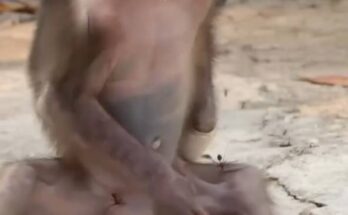
Monkeys have different predators depending on where they live and what species they are. The most common predators include:
- Big Cats – Leopards, jaguars, and cougars are some of the top predators of monkeys. These cats are strong, silent, and excellent climbers, making them deadly in forested environments.
- Birds of Prey – Eagles, especially the harpy eagle in South America and the crowned eagle in Africa, are known for swooping down and snatching young or small monkeys right out of the trees.
- Snakes – Large constrictor snakes like boa constrictors and pythons can ambush monkeys in the trees. Venomous snakes may also pose a threat if a monkey gets too close.
- Humans – Sadly, one of the greatest threats to monkeys today is human activity—through hunting, habitat destruction, and illegal pet trade.
- Other Carnivores – In some areas, animals like wild dogs, crocodiles, and even chimpanzees (who sometimes prey on smaller monkey species) are a threat.
How Monkeys Defend Themselves
Monkeys may be smaller than their predators, but they aren’t defenseless. Here are some clever ways they protect themselves:
- Living in Groups – Most monkeys live in large troops. This provides safety in numbers. They can spot danger more easily and warn each other using alarm calls.
- Vocal Warnings – Monkeys use different sounds to alert others about specific threats. Some species have special calls for different predators—like one call for eagles and another for leopards.
- Speed and Agility – Monkeys are quick and nimble, able to leap through trees with incredible speed. Arboreal monkeys (tree-dwellers) often escape danger by rapidly climbing or swinging away.
- Hiding and Camouflage – Smaller monkeys or those in dense forests often rely on their fur color and hiding skills to avoid being seen.
- Aggressive Defense – Some monkeys, especially when in groups, will mob a predator—shouting, throwing objects, and even attacking to drive it away.
- Learning and Teaching – Older monkeys teach the younger ones to recognize danger and how to react, helping the troop as a whole become better at survival.
Despite their small size, monkeys are intelligent, adaptable, and resourceful. Their lives in the wild are full of danger, but through cooperation, quick thinking, and natural instincts, they manage to survive and even thrive in some of the planet’s most challenging habitats.


